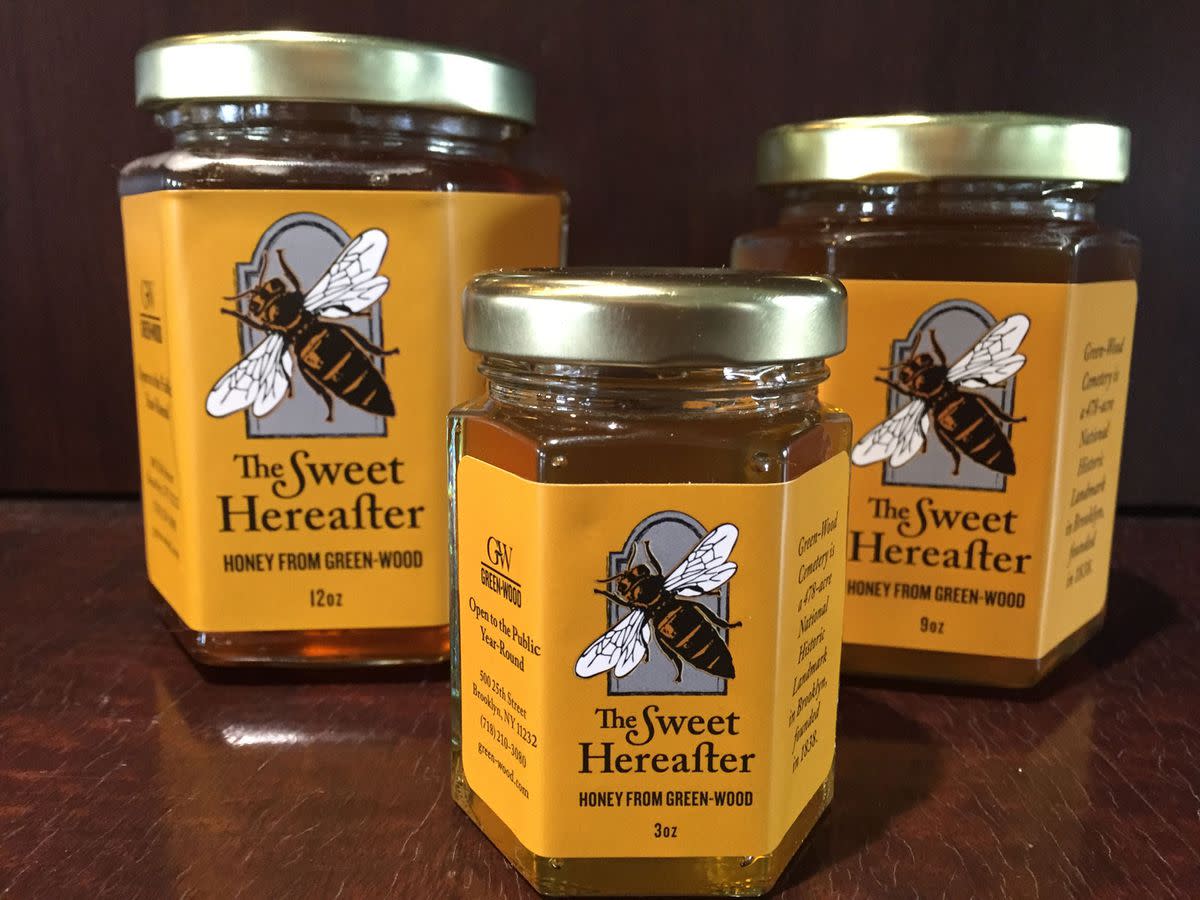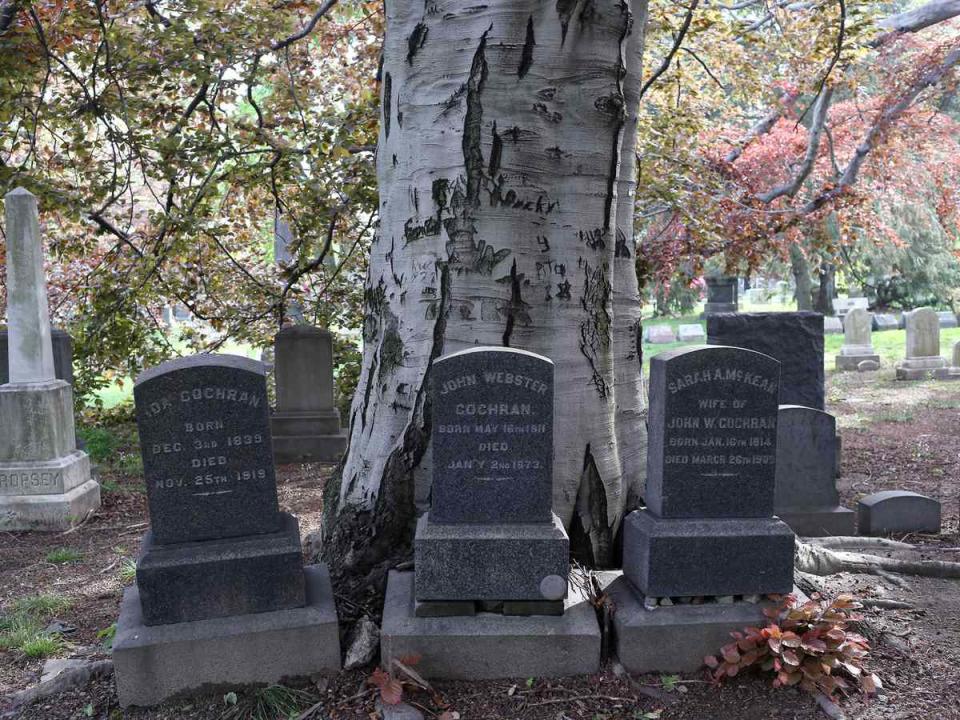This Honey Made in a Brooklyn Cemetery Is Probably Not Haunted

Green-Wood
Every other Sunday, Davin Larson heads to Green-Wood Cemetery in Brooklyn, not to pay his respects to the dead but to tend to his honeybees. This will be the third year that the cemetery has produced its cleverly named Sweet Hereafter honey, which is only available on-site each fall. The honey has developed a cult following amongst Brooklyn residents—and even people from further afield—who jump at the opportunity to buy jars of honey with such a vivid, slightly ghoulish backstory.
"I mean, everyone loves local honey," says manager of public engagement and development, John Connolly, "but especially having the unique provenance of cemetery honey is huge as a gift item."
Though he grew up keeping bees in Kansas City, Larson has a day job in social media and only started his urban beekeeping endeavor on a Fort Greene rooftop after New York City legalized it in 2010. Then, a few years ago, Larson was at a concert in Green-Wood's chapel when it occurred to him that the cemetery—which doubles as a lush, 478-acre, class II arboretum—would be the ideal place to set up beehives in the city. Strangely enough, starting an apiary was already on Green-Wood's radar, so they brought Larson on as their resident beekeeper.

Andrew Lichtenstein/Getty Images
The seven beehives are situated by the base of a dramatic willow tree, adjacent to one of Green-Wood's naturally-occurring glacial ponds. And the cemetery's half-million permanent "residents"—as those buried at Green-Wood are lovingly called—certainly aren't complaining. Larson is pleased that the families of those buried nearby have been immensely supportive of the project.
As he suits up and lights the smoker to calm the bees, Larson explains that—since the hives are in a public place—he purposely picked Carniolan honeybees for their docile nature. "They just could not be friendlier," he says. "They almost never try to sting me. I don't even wear a suit half the time. Although they're very moody animals and if it's recently rained or about to rain, they can be pretty pissy."
By getting into the honey business, Green-Wood is doing its part to save the humble honeybee. "It's a great thing to keep bees in the city," says Larson. "It's kind of a model for helping them recover."
Larson has seen firsthand the effects of colony collapse, which has wreaked havoc on the honeybee population in recent years. When his dad first started keeping bees, it was a low-maintenance hobby where you just came back at the end of the season to collect your honey and the majority of bees survived the winter. Larson says that now, even if you do everything right, only about 60% make it, and the population must be replenished each spring. Though it's unclear why this shift has occurred, he suspects that pesticides and the evolution of certain viruses are to blame.

Green-Wood
"Typically, there's a day where I have to wake up at like 5 a.m. and drive to rural Pennsylvania to pick up a bunch of loud boxes full of bees and then drive home on the interstate with my bee suit on," says Larson. This year the boxes weren't properly sealed, and he had to drive back with a few dozen bees flying around the car.
While it would be easy to write off honey made in a Brooklyn cemetery as some kind of hipster gimmick, Sweet Hereafter is anything but. For one, it tastes good. The flavor profile varies depending on where the bees have been getting their nectar (they have nearly 8,000 trees to choose from and thousands of flowers), as well as the season—Larson explains that honey is lighter in spring and darker with a richer flavor in the fall.
One flavor most batches have in common is a minty undertone, thanks to the Linden trees that dot the property. "Linden trees are the most prolific flowering plant in New York City in terms of nectar, so pretty much any honey from New York City is going to taste a little minty," says Larson.
The honey program isn't a moneymaker for Green-Wood; Sweet Hereafter sales go right back into its upkeep, plus they sell full- and half-hive sponsorships to further support the apiary. But Larson and Connolly do believe that the benefits are quite tangible.
As Green-Wood continues to develop as a cultural institution and tourist destination, Connolly says, "we also want to be really good stewards of this massive green space in the middle of the city. To have bees is a big part of that. They're great pollinators for all of our flowering plants and trees … they're a big part of any healthy ecosystem."
Larson and Connolly aren't sure how many jars of raw honey they produce since they just fill and sell them as fast as they can, but they estimate that last year they harvested a good 200 pounds of the liquid gold.
As for when the honey will be available for sale? "Soonishly," promises Larson.

